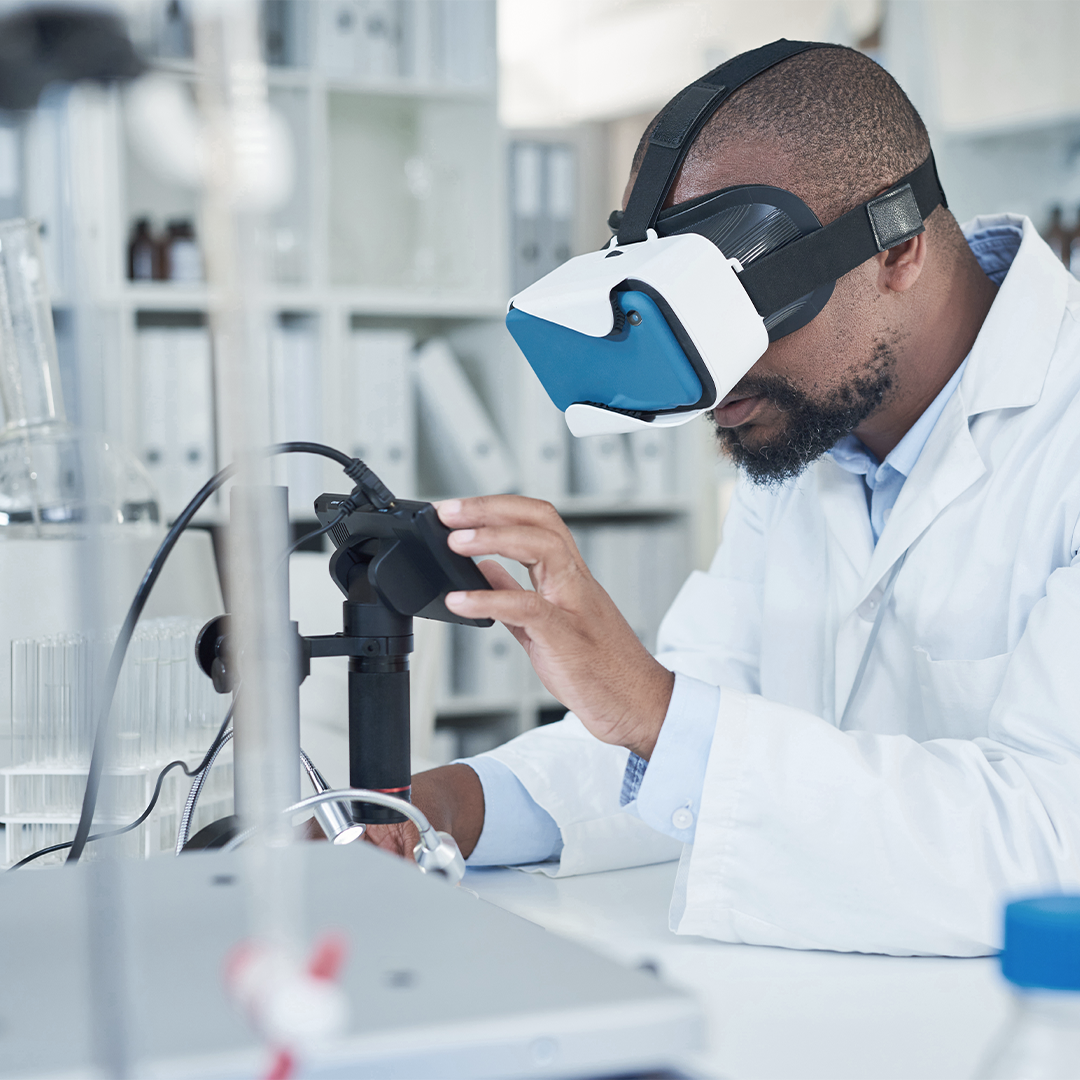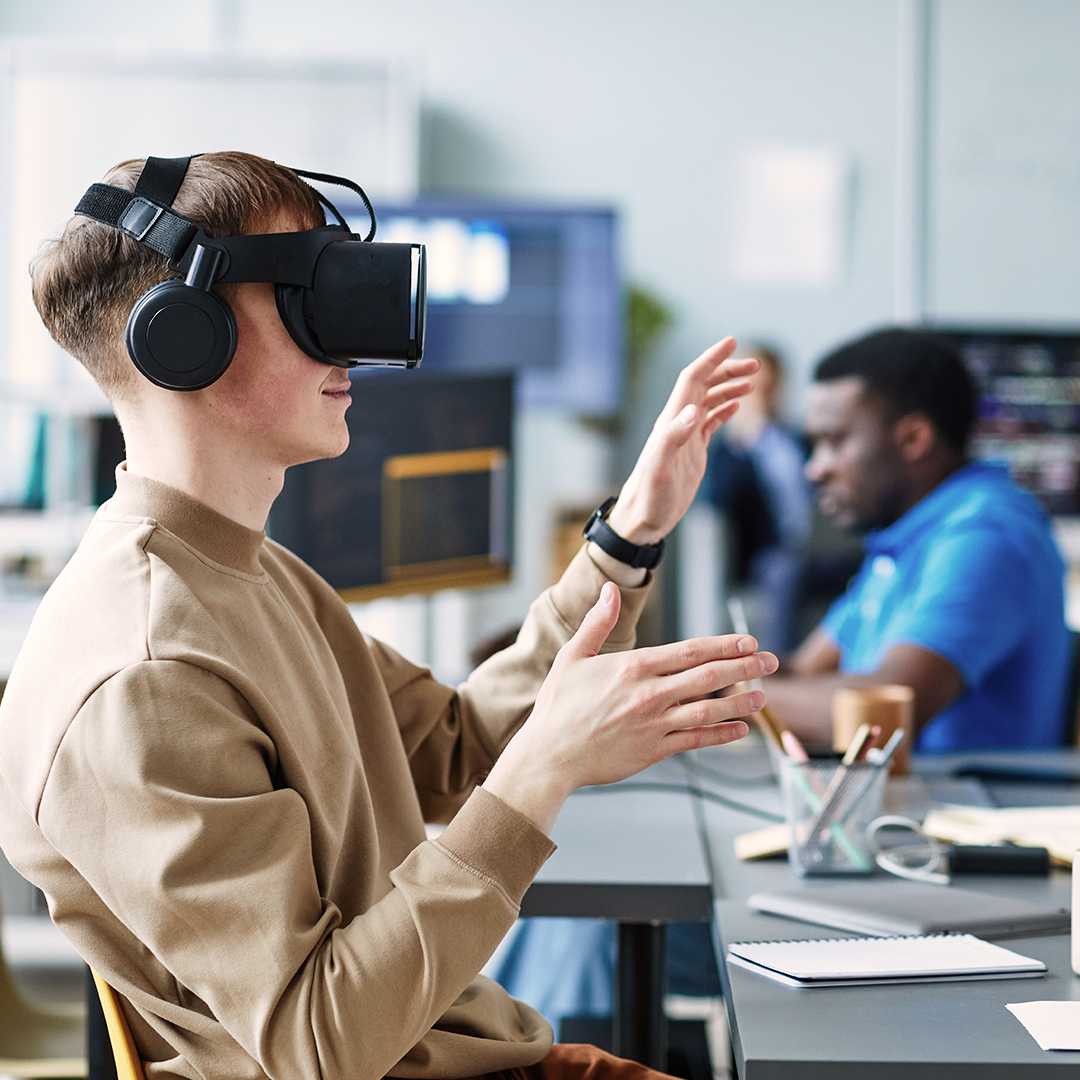Adaptive Spaces
Three Ways AI Will Affect Life Sciences Real Estate
December 5, 2024 3 Minute Read

The Life Sciences industry has seen tremendous interest in artificial intelligence (AI). Examples range from companies like Xaira Therapeutics and Recursion Pharmaceuticals receiving several large public and private investments to Google DeepMind’s cofounder and CEO winning the 2024 Nobel Prize in Chemistry for creating AlphaFold.
AI’s potential to accelerate drug development, improve the accuracy of patient outcomes’ predictive models and optimize supply chain and manufacturing processes impacts companies from small biotech startups to large corporations.
AI will affect life sciences real estate portfolios, and biotech companies must understand how to proactively address these changes:
-
Increasing Electrical and Technology Needs and Costs
The rise of AI and machine learning is driving significant changes in data centers, including increased use of graphics processing units (GPUs) and liquid cooling to reduce the heat from these power-intensive applications. Additionally, AI is projected to significantly drive future data center demand. High-performance computing will require rapid innovation in data center design and technology to manage rising power density needs. According to CBRE’s North America Data Center Trends H1 2024 report, nearly 80% (3,056.4 MW) of the 3,871.8 MW under construction in primary markets was preleased. While cloud providers continue to lease most available power capacity, AI providers also account for a considerable amount of demand. Construction activity in primary markets hit a record-high 3,871.8 MW in H1 2024, up by 69% from a year earlier. However, a shortage of available power and longer lead times to improve electrical infrastructure continue to delay construction completions.
Aligning a company’s AI aspirations with the rapidly changing world of data center supply and demand requires a strategic and cooperative approach between the business, technology and real estate stakeholders. Whether to increase server capacity on-premises or to outsource, how to design on-premises data centers and how these costs affect the bottom line are key questions to answer quickly, as the demand for data centers is only expected to grow.
-
Evolving Headcount, Lab Space and Office Design
The increase of AI and machine learning affects not only electricity and technology but also employee headcount, office space design and attracting and retaining skilled talent. According to CBRE’s Artificial Intelligence and the Future of Workplace, AI adoption will fuel two workplace trends: improving the quality of space and increasing the amount of collaboration space. AI increases the need for highly skilled workers which will drive demand for better quality workspaces, building amenities and locations. The importance of the office as a place for connection will grow even further as AI and related technology allow workers to dedicate more time to collaboration. The workplace will need to evolve to remain relevant and stimulate innovation, creativity and inspiration—all necessary in the evolving world of biotechnology.
Not only does the workplace need to accommodate AI and machine learning, but so does the workforce. According to GlobalData’s Artificial Intelligence in Drug Discovery report, quarterly AI-related pharma job postings tripled between Q4 2020 and Q2 2023. As demand for technology specialists and other highly trained, well-educated employees continues to grow, office workers will expect a better workplace experience. To attract and retain skilled workers, organizations need to anticipate those evolving expectations.
-
Uncertain Clinical Outcomes
AI’s use in drug discovery and development is still in its infancy, with most novel drugs still in preclinical or discovery phase. According to a Pharmaceutical Technology poll completed from January 27 to June 13, 2022, more than 30% of 294 respondents believed that AI’s peak in drug discovery and development would take more than nine years.
Since 2015, 75 AI-discovered molecules have been entered into clinical trials from AI-native biotech companies and their pharmaceutical partners, demonstrating a compound annual growth rate of over 60%. Phase 1 trials for AI-discovered drugs have achieved an 80%-90% success rate, significantly higher than the historical industry averages of 40%-65%, while Phase 2 trials have a 40% success rate, which aligns with historical averages. While time and cost savings are helpful, improvements in the probability of clinical success delivers AI’s biggest benefits in drug discovery and R&D economics.
The lack of an approved AI-developed drug means continued uncertainty around AI’s future in the life sciences industry. This uncertainty exacerbates the need for future flexibility in office and lab space for life sciences companies of all types and sizes.
Life sciences companies have strong enthusiasm for what AI could mean for the industry’s future. However, the current AI phase leaves many unanswered questions regarding potential ramifications. Despite the uncertainty, companies have many ways to prepare real estate portfolios for AI’s future requirements, while maintaining flexibility in the interim.
Related Insights
Related Service
- Property Type
Life Sciences
We provide the life sciences industry solutions that maximize facility and investment performance across labs, manufacturing space and critical enviro...
Contact
Mark Vito
Portfolio Strategy Manager / Occupier Growth & Business Development | Advisory Life Sciences


